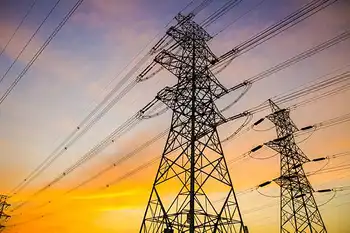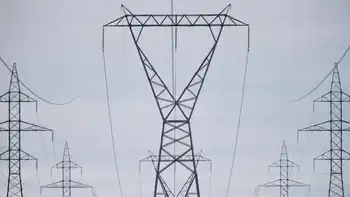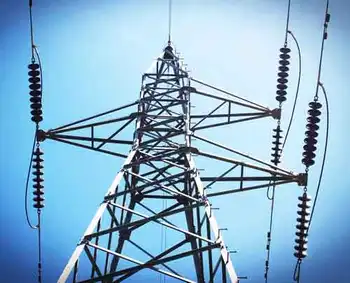Calif. Dodges Outages, But Not the Bill
Gateway To North America's Electrical Industry -
Los Angeles, CA -- California got through Wednesday without any rolling blackouts, however paying the costs of the state's long-running electricity shortage was the lead item on the agenda of state lawmakers and regulators.
Despite warnings that as many as 800,000 people could experience power cuts during the late afternoon, it appeared that consumption had been trimmed enough -- thanks in part to cooler weather -- to dodge the need for a third consecutive day of blackouts.
While the California Independent System Operator called for increased conservation as temperatures climbed into the 80s and 90s, state lawmakers were committing the state to one of the largest bond measures in its history as a means of keeping power produced by private generating companies flowing on the state's grid.
"I think the problem was caused by the unfettered greed of these generators who have brought capitalism to a new low," declared Senate President Pro Tem John Burton during the California legislative session.
The massive $13.4 billion bond measure passed by the state Senate Wednesday will be used to finance the state's purchases of electricity on behalf of Pacific Gas & Electric and Southern California Edison, companies that saw their credit shattered in recent months when they were caught between soaring prices for wholesale power and state laws preventing them from passing the additional costs on to their customers.
At the same time, the California Public Utilities Commission announced its proposal for a series of tiered rate increases that will pump more money into Edison and PG&E.
The increases were targeted at sectors that use the highest amounts of electricity, including agriculture and industry. PUC commissioners have said that most ratepayers will not see their electric bills go up unless their power usage is well above average.
Ratepayers of PG&E, Edison and the state's third-largest utility, San Diego Gas and Electric, will foot the bill for the bond measure -- regardless of how much electricity they use.
The bond plan encountered resistance in the Legislature from Republicans who questioned the wisdom of adding interest costs rather than just paying outright for the power purchases. Democrats, led by Gov. Gray Davis, contended that the bonds would protect the state's treasury and make it possible to buy power without having to sacrifice other state programs.
Wednesday also saw a slight cooling trend that apparently was just enough to trim demand to get the state through the day without a repeat of the rolling blackouts that had rippled through the state on Monday and Tuesday.
"The third day of any heat-wave is always the worst as the residual heat in office buildings and homes cause air conditioners to work harder," Pacific Gas & Electric said in an advisory. "In addition, people often become frustrated by the continued heat and turn down their thermostats to get cool."
This week's heat wave was expected to continue its abatement in subsequent days, however ISO officials warned that more than 12,000 megawatts of generating capacity was out of service due to some mechanical problems and that imports from the Pacific Northwest and Arizona were limited.
Outage Potential Grows in California Despite a slight cooling trend, Californians have been were warned that they could still expect rolling blackouts for a third consecutive day and that the number of people left in the dark could be more than double that of the previous day when some 300,000 homes had their electricity cut..
The California Independent System Operator (ISO) announced that a Stage Two power alert was in effect Wednesday afternoon and that the situation could deteriorate later in the day to a Stage Three status that holds the likelihood of outages.
"We are predicting that a Stage Three with rotating outages may occur between 2-3 p.m. and last until 5 p.m., with loads of up to 800 megawatts (MW) being curtailed," the ISO said in a statement. "We caution that these are very dynamic conditions, and the amount of MW is impacted by import flows as well as the temperature."
Rolling blackouts occurred briefly on Monday and Tuesday afternoon, however the amount of power cut was 300 MW and 400 MW respectively; a megawatt is enough electricity for 750-1,000 homes, so a loss of 800 MW would leave nearly 800,000 homes without power.
The possibility of outages was expected since weather forecasts called for temperatures to reach into the 90s in the state's inland regions and well above 100 in desert areas around Palm Springs and in southern Nevada and the Phoenix area.
Hot weather increases the need for air conditioning, which causes power consumption to soar. Statewide demand was expected to peak at 35,367 MW late Wednesday with Thursday's peak projected at 34,406 MW as the cooling trend continues, according to the ISO.
Related News

TVA faces federal scrutiny over climate goals, electricity rates
NASHVILLE - The Tennessee Valley Authority is facing federal scrutiny about its electricity rates and climate action.
Members of the House Committee on Energy and Commerce are “requesting information” from TVA about its ratepayer bills and “out of concern” that TVA is interfering with the deployment of renewable and distributed energy resources.
“The Committee is concerned that TVA’s business practices are inconsistent with these statutory requirements to the disadvantage of TVA’s ratepayers and the environment,” the committee said in a letter to TVA CEO Jeffrey Lyash.
The four committee members — U.S. Reps. Frank Pallone, Jr. (D-NJ), Bobby L. Rush (D-IL), Diana DeGette…




